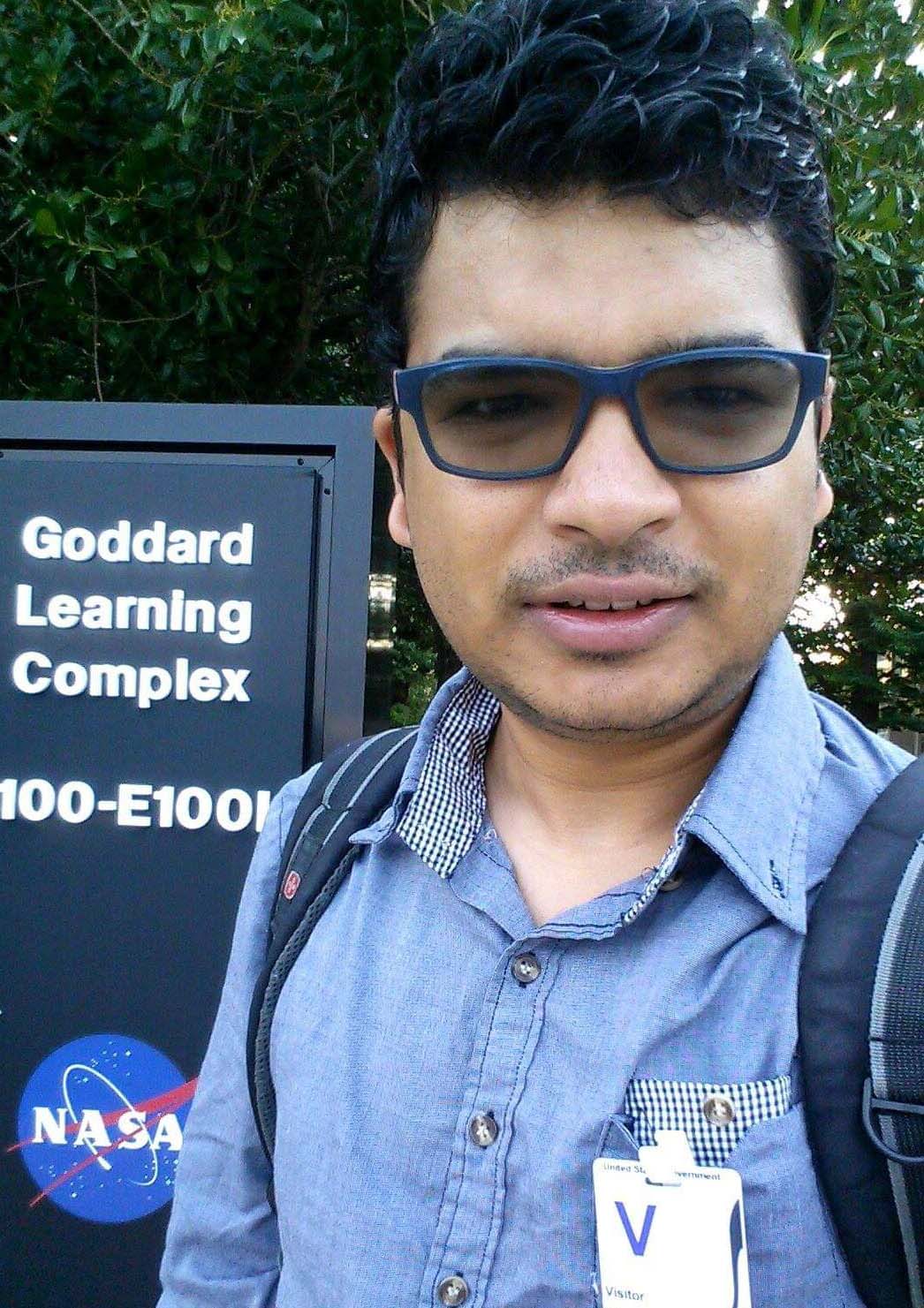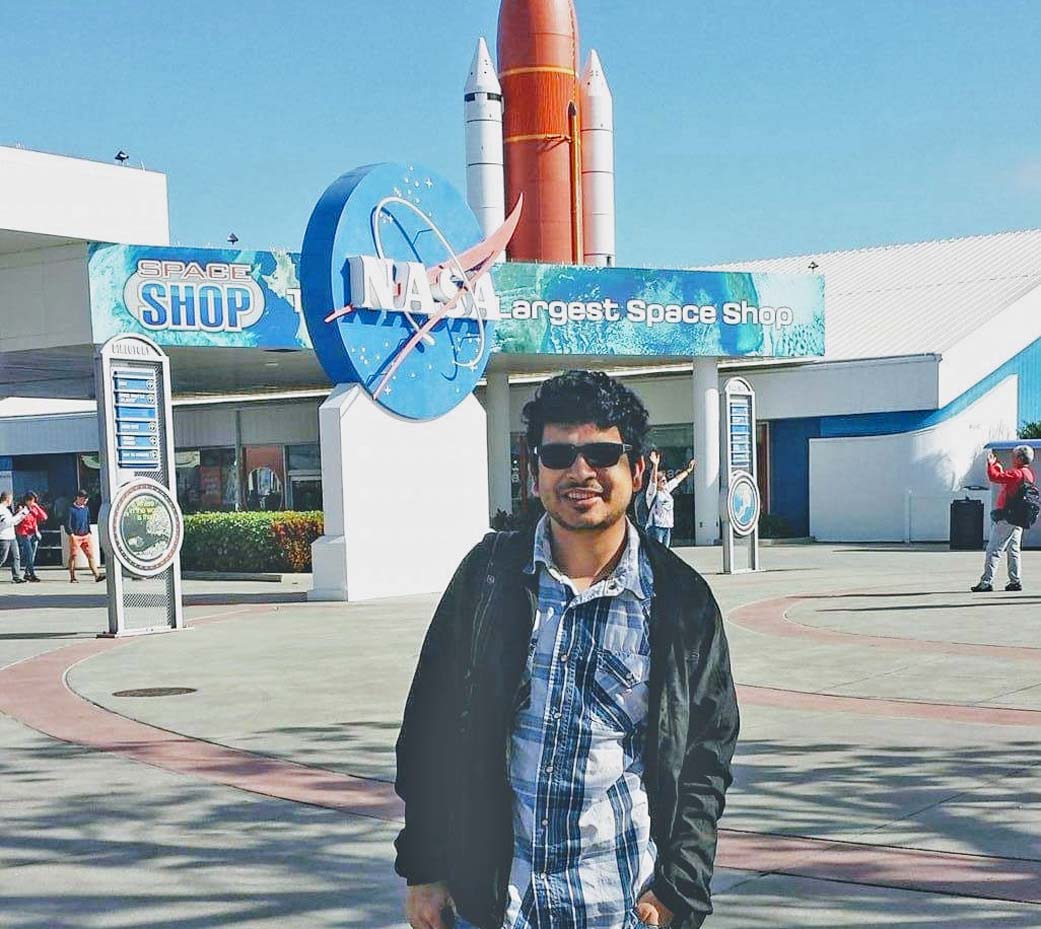Name: Hari B. Subedi
Formal Job Classification: Optical engineer
Organization: Code 551, Optics Branch, Applied Engineering and Technology Directorate
What do you do and what is most interesting about your role here at Goddard? How do you help support Goddard’s mission?
I mainly work on emerging technologies for imaging planets outside our solar system called exoplanets. I am now working on the Roman Space Telescope mission’s prism spectroscopy system.
Where did you grow up?
My story is somewhat unusual. I was born in Bhutan. In the ’90s, Bhutan conducted an ethnic cleansing of people of Nepalese origin. I was fourth-generation Bhutanese of Nepalese origin living in Bhutan. When I was about 1, we fled Bhutan. I grew up on the plains of Nepal in a United Nations refugee camp.
We had free classes at the UN camp, all in English, through 10th grade. Then I qualified for and finished high school in Kathmandu, Nepal, on a full tuition waiver due to scoring the highest on the entrance test. I was most interested in mathematics and science.
What was life like growing up in a UN refugee camp?
The UN had seven refugee camps in eastern Nepal. Ours had about 10,000 people. Our camp is gone, but about 15,000 people remain in these camps.
The UN delivered food every two weeks. We were not supposed to go outside of the camp per government rules. However, we were allowed to go to outside places for education, beyond 10th level, if we could afford to pay.
My parents, two older brothers and I lived in a one-room hut my father built with UN-provided materials. The walls were bamboo, the roof was thatch and the floor was dirt. It rained a lot, but the thatch roof generally kept the dirt floor dry.
The UN gave us clothes.
My father, a teacher, worked in the camp training other teachers. He was able to earn some money, which made us better off than many others.
The UN had a health center. Very ill people were treated at regional hospitals.
How did living in a UN refugee camp shape your personal outlook?
It made me more resilient. I do not worry too much about minor problems. My parents always told us to work hard, do well in school and get somewhere in life.
We grew up hopeful. I am hopeful.
How did you get from Nepal to the United States?
In 2008, when I had just finished high school in Nepal, the United States Refugee Resettlement Program brought my family and me to Arizona. We are now United States citizens. My family lives in Maryland now.
Why did you decide to become an optical engineer?
I was always interested in space. Growing up, we did not have electricity. We spent a lot of time looking up at the skies, the stars and the planets. I wanted to understand all about the skies and the stars, to learn if life existed on any of them.
I did not know how to do that, but I started with studying engineering. My hope was to work for NASA someday. Everywhere in the world, people know about NASA. We read about NASA in local papers and heard about it on the radio.
Where did you go for college and university?
I began at Pima Community College in Arizona and then transferred to the University of Arizona where I earned a bachelor’s degree in aerospace engineering and mathematics. I then earned a Ph.D. in aerospace engineering, with a focus on technologies for exoplanet imaging, from Princeton University.
How did you come to Goddard?
During my college years, I worked multiple jobs including at a public library, an electronics store, and after-school tutoring for high school students. In graduate school, I was a teacher’s assistant.
My Princeton adviser told me that Goddard had a Pathways internship program and that I could work on the Large UV/Optical/IR Surveyor (LUVOIR) concept. In 2017, I came to Goddard as a Pathways intern working on LUVOIR. My first day at Goddard was the 2017 solar eclipse. It was a great way to start.
I was really excited! It was one of the happiest moments of my entire life!
I returned to Princeton to write my thesis about exoplanets. The title was “Low-Order Wavefront Sensing and Control for Future Space-based Coronagraphic Missions.”
What did you do when you began full-time at Goddard?
After earning my Ph.D. in 2018, I returned full-time at Goddard to work on the LUVOIR concept.
In addition, I applied for and received funding for an Internal Research and Development (IRAD) project on technology relating to exoplanet imaging.
What are you doing on Roman, your current project?
I am working on a test bed verification. We need to verify that all the prisms and lenses meet the required specifications. We have a large team and multiple partners.
Who are your mentors? What are the most important lessons they taught you?
Tylor Groff and Matt Bolcar have been incredibly helpful and kind to me since I arrived at Goddard. They are my unofficial mentors. Tylor taught me many things about working in the lab at Goddard. We both met at Princeton. We both had the same adviser and worked in the same lab. Matt helped me understand the Goddard culture, how to apply for the IRAD and other aspects of Goddard life. I have known him since I started as a Pathways intern. I am very grateful to both of them.
What is your role as a member of the Diversity and Inclusion (D&I) Committee?
In 2019, I became a member of the D&I Committee. I want to make Goddard more inclusive and have some ideas about community outreach. I proposed having a paper airplane competition for the local elementary schools. Everyone liked the suggestion and we are working on it. Goddard has done an excellent job towards being diverse and inclusive.
What are your hobbies?
I enjoy hiking. I play ping pong and badminton.
What is your favorite book?
Ernest Hemmingway’s “A Farewell to Arms.” It’s about suffering, hope, love, and the harsh realities of war.
What is your one hope?
I would hope for peace for everyone in the world.
What is your “six-word memoir”? A six-word memoir describes something in just six words.
Resilient. Driven. Friendly. Curious. Polite. Hopeful.
By Elizabeth M. Jarrell
NASA’s Goddard Space Flight Center




























